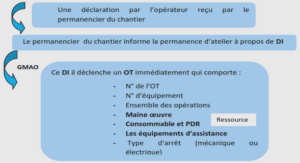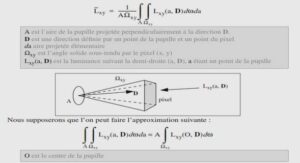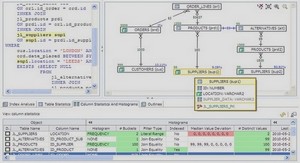Contrôle approché explicite par moyennisation
A review of previous results
In this section, we recall previous results about quantum systems with bilinear controls. The model (5.1) of an infinite potential well was proposed by Rouchon [122] in the dipolar approximation (µ2 = 0). A classical negative result was obtained in [5] by Ball, Marsden and Slemrod for infinite dimensional bilinear control systems. This result implies, for system (5.1) with µ2 = 0, that the set of reachable states from any initial data in H2 ∩ H1 0 ∩ S with control in L 2 (0, T ) has a dense complement in H2 ∩ H1 0 ∩ S. However, exact controllability was proved in 1D by Beauchard [10] for V = 0 and µ1(x) = x in more regular spaces (H7 ). This result was then refined in [16] by Beauchard and Laurent for more general µ1 and a regularity H3 . The question of stabilization is addressed in [19] where Beauchard and Nersesyan extended previous results from Nersesyan [111]. They proved, under appropriate assumptions on µ1, the semi-global weak H2 stabilization of the wave function towards the ground state using explicit feedback control and Lyapunov techniques in infinite dimension. However sometimes, for example in the case of higher laser intensities, this model is not efficient (see e.g. [64, 65]) and we need to add a polarizability term u(t) 2µ2(x)ψ in the model. This term, if not neglected, can also be helpful in mathematical proofs. Indeed the result of [19] only holds if µ1 couples the ground state to any other eigenstate and then the use of the polarizability enables us to weaken this assumption. Mathematical use of the expansion of the Hamiltonian beyond the dipolar approximation was used by Grigoriu, Lefter and Turinici in [80, 135]. A finite dimension approximation of this model was studied in [57] by Coron, Grigoriu, Lefter and Turinici. The authors proposed discontinuous feedback laws and periodic highly oscillating feedback laws to stabilize the ground state. In this article, we extend in our infinite dimensional framework their idea of using (time-dependent) periodic feedback laws. We also refer to the book by Coron [54] for a comprehensive presentation of the feedback strategy and the use of time-varying feedback laws. How to adapt the Lyapunov or LaSalle strategy in an infinite dimensional framework is not clear because closed bounded sets are not compact so the trajectories may lack compactness in the considered topology. In this direction we should cite some related works of Mirrahimi and Beauchard [17, 103] where the idea was to prove approximate convergence results. In this article, we will use an adaptation of the LaSalle invariance principle for weak convergence which was used for example in [19] by Beauchard and Nersesyan. There are other strategies to show a strong stabilization property. Coron and d’Andréa-Novel proved in [55] the compactness of the trajectories by a direct method for a beam equation and thus the strong stabilization. Couchouron [61, 62] gave sufficient conditions to obtain the compactness in favorable cases where the control acts diagonally on the state. Another strategy to obtain strong results is to look for a strict Lyapunov function, which is an even trickier question, and was done for example by Coron, d’Andréa-Novel and Bastin [56] for a system of conservation laws. The question of approximate controllability has been addressed by various authors using various techniques. In [112], Nersesyan uses a Lyapunov strategy to obtain approximate controllability in large time in regular spaces. In [45], Chambrion, Mason, Sigalotti and Boscain proved approximate controllability in L 2 for a wider class of systems using geometric control tools for the Galerkin approximations. The hypotheses needed were weakened in [25] and the approximate controllability was extended to some Hs spaces in [30]. Explicit approximate controllability in large time has also been obtained by Ervedoza and Puel in [70] on a model of trapped ion, using different tools.
Structure of this article
As announced in Section 5.1.1, we study the system (5.1) by introducing a highly oscillating time-periodic control and the corresponding averaged system. Section 5.2 is devoted to the introduction of this averaged system and its weak stabilization using Lyapunov techniques and an adaptation of the LaSalle invariance principle in infinite dimension. In Section 5.3 we study the approximation property between the solution of the averaged system and the solution of (5.1) with the same initial condition. We prove that on every finite time interval these two solutions remain arbitrarily close provided that the control is oscillating enough. This is an extension of classical averaging results for finite dimension dynamical systems. Finally gathering the stabilization result of Section 5.2 and the approximation property of Section 5.3, we prove Theorem 5.1 in Section 5.4. Section 5.5 is devoted to numerical simulations illustrating several aspects of Theorem 5.1 and of the averaging strategy.
Approximation by averaging
The method of averaging was mostly used for finite-dimensional dynamical systems (see e.g. [124]). The concept of averaging in quantum control theory has already produced interesting results. For example, in [106] the authors make important use of these averaging properties in finite dimension through what is called in quantum physics the rotating wave approximation. The main idea of using a highly oscillating control is that if it is oscillating enough the initial system behaves like the averaged system. We extend this concept in our infinite dimensional framework : we prove an approximation result on every finite time interval. More precisely we have the following result.Proposition 5.5. Let [s, L] be a fixed interval and ψ 0 ∈ S ∩ H4 (0) with 0 < L(ψ 0 ) < 1. Let ψav be the solution of the closed loop system (5.6),(5.9) with initial condition ψav(s, ·) = ψ 0 . For any δ > 0, there exists ε0 > 0 such that, if ψε is the solution of (5.1) associated to the same initial condition ψε(s, ·) = ψ 0 and control u ε (t) defined by (5.13) with ε ∈ (0, ε0) then ||ψε(t, ·) − ψav(t, ·)||H2 ≤ δ, ∀t ∈ [s, L]. Remark 5.4. Notice that the controls α and β were defined using the averaged system in a feedback form but the control u ε used for the system (5.1) is explicit and is not defined as a feedback control. Remark 5.5. Due to the infinite dimensional framework, we are facing regularity issues and cannot adapt directly the strategy of [124].
Validation We now prove the validity of the implemented code
The eigenvectors ϕk,V are approximated by N = 50 modes. We take, as a test case, V (x) := (x − 1/2)2 , µ1(x) := x 2 and µ2(x) := x. The considered initial condition is ψ 0 = √ 1 2 ϕ1,V + √ i 2 ϕ2,V . The value of the oscillating parameter is ε = 10−3 . The parameter γ is chosen such that L(ψ 0 ) = 3/4. We compute the discrete Lyapunov function for the averaged system and the Hs norm (with s = 1.8) to the ground state for both the oscillating and the averaged system. The time scale is [0, T ] with T = 1000 and a time step dt = 10−3 . For M = 5, we get the results presented in Figure 5.1.As expected, we observe the convergence of the Lyapunov function to 0. The solutions of (5.39) and (5.40) are driven to the ground state (up to a global phase). To validate the simulations, we have also tested the code for M = 10 and M = 20. We obtained the same asymptotic behaviour and the same values for the Lyapunov function and the Hs distance to the target. As the approximate controllability uses the fact that the controls are oscillating, the time step dt cannot be taken large with respect to the oscillating parameter ε. For ε = 10−3 , we obtain the same results with dt = 10−3 and dt = 10−4 . However, instabilities appear on the oscillating system for dt = 10−2 . Thus, in all what follows the time step will be chosen smaller than ε. We now present several simulations to illustrate various aspects of Theorem 5.1
Influence of the initial condition
For every other initial condition tested, the asymptotic behaviour is the same. We present here the results for the same parameters as in Figure 5.1 but with the initial condition ψ 0 = √ 1 3 ϕ1,V + √ 1 3 ϕ2,V + √ i 3 ϕ3,V . In this case, the stabilization of the averaged system is slower and we computed it for T = 5000.
Averaging strategy
We present numerically the influence of the oscillating parameter ε. First, we consider the same potential, dipolar and polarizability moments as in Figure 5.1. We compute the discrete Hs norm (for s = 1.8) to the ground state (up to a global phase) and the discrete H2 norm of Xav − Xε. Figure 5.3 is obtained with ε = 10−3 while Figure 5.4 is obtained with ε = 10−4 . Both are computed with a time step dt = ε and final time T = 500. For a fixed parameter ε, we observe that the H2 distance between the solution of (5.1) and the solution of (5.6) with the same initial condition does not increase as the time goes to infinity but rather tends to a limit value. This limit value is of the same order of magnitude as ε. We observe that ||Xav(T ) − X10−3 (T )||H2 ||Xav(T ) − X10−4 (T )||H2 ≈ 30. This validates numerically the results of Proposition 5.5 and indicates that this averaging property should be valid on an infinite time horizon. The same behaviour has been obtained with other parameters. We present here the simulations with µ1(x) := cos(x) and µ2(x) := cos(2x), inspired by the physical situation of alignment dynamic of a HCN molecule as in [65]. Figure 5.5 is obtained with ε = 10−3 while Figure 5.6 is obtained with ε = 10−4 . Both are computed with a time step dt = ε and final time T = 1000 (as the stabilization process seems slower in this case).




